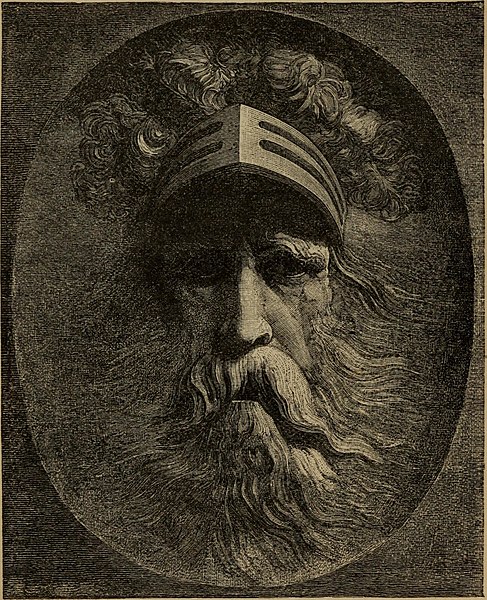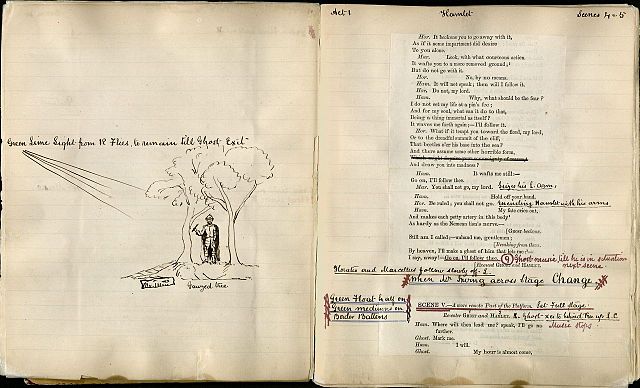The ghost of Hamlet's father is a character from William Shakespeare's play Hamlet. In the stage directions, he is referred to as "Ghost". His name is also Hamlet, and he is referred to as King Hamlet to distinguish him from the Prince, his son and the protagonist of the story.
Illustration of the Ghost by Thomas Ridgeway Gould from an 1890 printing of Hamlet
The prompt book from an 1874 staging of Hamlet by English actor and manager Henry Irving (1838–1905), in which he experimented with using limelight (burning calcium oxide) to represent the Ghost.
The Tragedy of Hamlet, Prince of Denmark, often shortened to Hamlet, is a tragedy written by William Shakespeare sometime between 1599 and 1601. It is Shakespeare's longest play. Set in Denmark, the play depicts Prince Hamlet and his attempts to exact revenge against his uncle, Claudius, who has murdered Hamlet's father in order to seize his throne and marry Hamlet's mother. Hamlet is considered among the "most powerful and influential tragedies in the English language", with a story capable of "seemingly endless retelling and adaptation by others". It is widely considered one of the greatest plays of all time. Three different early versions of the play are extant: the First Quarto ; the Second Quarto ; and the First Folio. Each version includes lines and passages missing from the others.
Hamlet portrayed by Edwin Booth (c. 1870)
Hamlet mistakenly stabs Polonius (Artist: Coke Smyth, 19th century).
The gravedigger scene. (Artist: Eugène Delacroix, 1839)
A facsimile of Gesta Danorum by Saxo Grammaticus, which contains the legend of Amleth






